I have a table with 12 registers. I want to count the row just if the column "AREA_OPERATIVA" is different from the previous row (ordering by date asc).

For example, from row 1 to row 2 it shouldn't count anything because both have same area 'CROSS' but between rows 2 and 3, it should count (or sum 1, I don't care) since 'CROSS' and 'UTRDANIOS' are different. So the final count should be 3 for the whole table.
Is it possible to do this via query or do I need to make a script with a cursor for this purpose?
I've tried this:
SELECT a.creclama,
sum (CASE WHEN b.area_operativa NOT LIKE a.area_operativa THEN 1 ELSE 0 END) AS increment
FROM TR_ASGAREOPE a
INNER JOIN TR_ASGAREOPE b ON a.creclama = b.creclama
and a.cdistribuidora = b.cdistribuidora
and a.secuencia = b.secuencia
WHERE a.creclama = 10008354
group by a.creclama;
But is counting the full 12 rows.
EDIT:
Finally I could resolve this by the next query:
select sum (
CASE WHEN (comparacion.area_operativa not like comparacion.siguiente_fila THEN 1 ELSE 0 END) AS incremento
from (
select creclama,
area_operativa,
lead(area_operativa) over (order by fmodifica) as siguiente_fila
from TR_ASGAREOPE
where creclama = 10008354
order by fmodifica
);
Hope it is useful for someone in the future, it really got me stuck for a day. Thank you all guys.